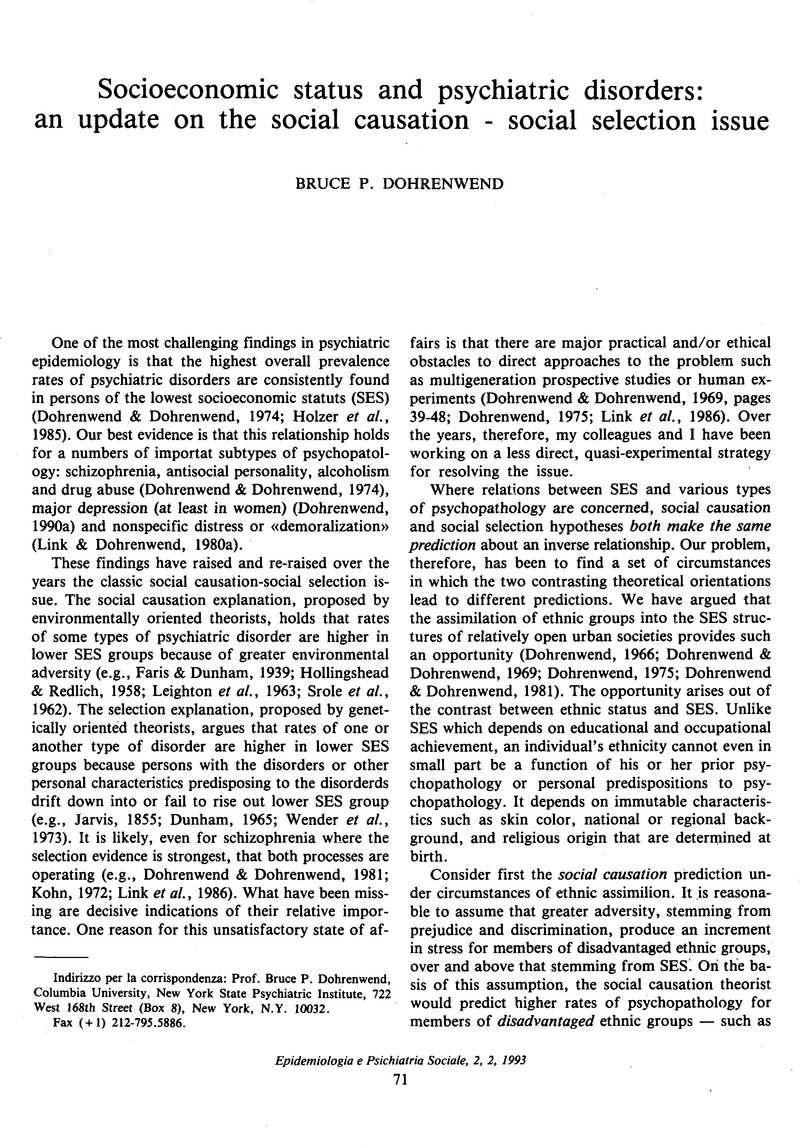Crossref Citations
This article has been cited by the following publications. This list is generated based on data provided by Crossref.
Saraceno, Benedetto
and
Barbui, Corrado
1997.
Poverty and Mental Illness.
The Canadian Journal of Psychiatry,
Vol. 42,
Issue. 3,
p.
285.
Bonizzato, Paola
and
Tello, Juan Eduardo
2003.
Social economic inequalities and mental health. I. Concepts, theories and interpretations.
Epidemiologia e Psichiatria Sociale,
Vol. 12,
Issue. 3,
p.
205.
Bye, Lynn
and
Partridge, Jamie
2003.
Factors affecting mental illness hospitalization rates: analysis of state-level panel data.
The Social Science Journal,
Vol. 40,
Issue. 1,
p.
33.
Denton, Ellen-ge D
Shaffer, Jonathan A
Alcantara, Carmela
Clemow, Lynn
and
Brondolo, Elizabeth
2015.
Hispanic residential ethnic density and depression in post–acute coronary syndrome patients: Re-thinking the role of social support.
International Journal of Social Psychiatry,
Vol. 61,
Issue. 3,
p.
225.
Riley, Donna B.
2019.
Transgender Medicine.
p.
293.
Attar, Rubina
Jensen, Svend Eggert
Nielsen, Rene Ernst
Polcwiartek, Christoffer
Andell, Pontus
Pedersen, Christian Torp
and
Kragholm, Kristian
2020.
Time Trends in the Use of Coronary Procedures, Guideline-Based Therapy, and All-Cause Mortality following the Acute Coronary Syndrome in Patients with Schizophrenia.
Cardiology,
Vol. 145,
Issue. 7,
p.
401.
Congdon, Peter
2024.
Psychosis prevalence in London neighbourhoods; A case study in spatial confounding.
Spatial and Spatio-temporal Epidemiology,
Vol. 48,
Issue. ,
p.
100631.
Liang, Linlin
and
Wang, Hongli
2025.
Living with contradictions: A corpus-assisted analysis of grown-up left-behind children discourses in Zhihu.
Discourse & Society,
Vol. 36,
Issue. 2,
p.
267.



